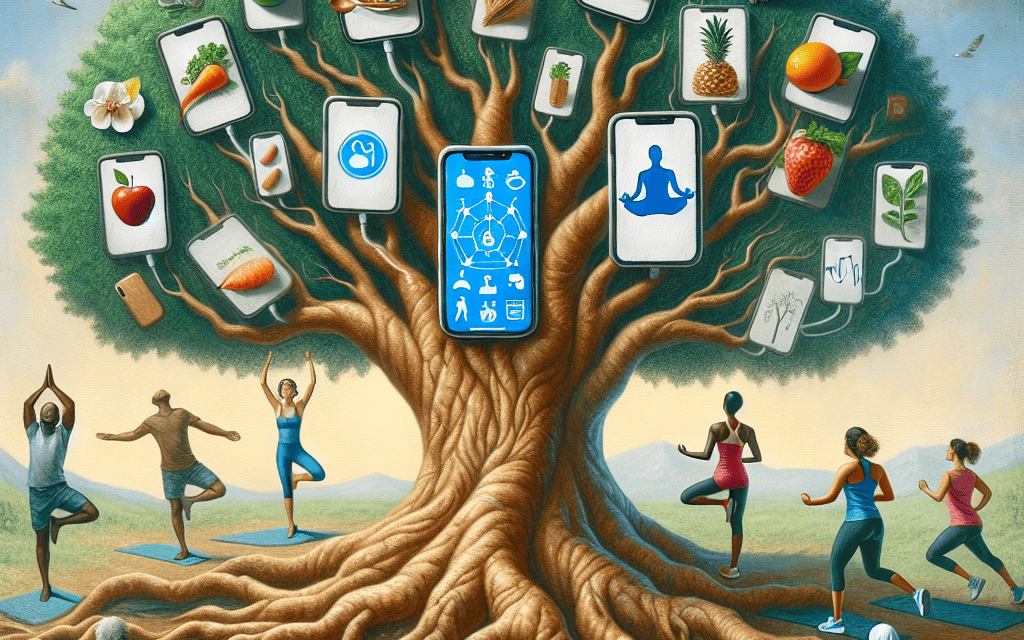-
Table of Contents
- The Rise of Health and Wellness Apps
- The Evolution of Health and Wellness Apps
- Early Beginnings: Fitness Trackers
- Expansion into Holistic Health
- Integration with Wearable Technology
- Personalization and AI-Driven Insights
- The Role of Telehealth and Remote Monitoring
- The Impact of Health and Wellness Apps on Society
- Empowerment Through Information
- Promoting Preventive Health
- Fostering Community and Support
- Addressing Mental Health Stigma
- Challenges and Ethical Considerations
- The Technology Behind Health and Wellness Apps
- Artificial Intelligence and Machine Learning
The Rise of Health and Wellness Apps

In recent years, the health and wellness industry has experienced a significant transformation, largely driven by the proliferation of mobile applications. These apps have revolutionized how individuals approach their health, offering unprecedented access to personalized wellness solutions. From fitness tracking to mental health support, health and wellness apps have become an integral part of daily life for millions worldwide. This article explores the rise of these apps, examining their impact, the technology behind them, and their future potential.
The Evolution of Health and Wellness Apps
The journey of health and wellness apps began with simple fitness trackers and has evolved into a sophisticated ecosystem of applications catering to various aspects of health. This evolution is marked by technological advancements, changing consumer preferences, and a growing awareness of holistic health.
Early Beginnings: Fitness Trackers
The initial wave of health apps focused primarily on fitness tracking. These apps allowed users to monitor their physical activity, count steps, and set fitness goals. Pioneers like Fitbit and MyFitnessPal set the stage for a new era of health consciousness, making it easier for individuals to track their progress and stay motivated.
Fitness trackers quickly gained popularity due to their user-friendly interfaces and the ability to sync with wearable devices. This integration provided users with real-time data, enhancing their ability to make informed decisions about their health. As a result, fitness trackers became a staple for health enthusiasts and casual users alike.
Expansion into Holistic Health
As technology advanced, so did the capabilities of health apps. Developers began to recognize the importance of addressing not just physical fitness but also mental and emotional well-being. This shift led to the creation of apps focused on meditation, stress management, and sleep improvement.
Apps like Headspace and Calm emerged as leaders in the mental wellness space, offering guided meditation sessions and relaxation techniques. These apps provided users with tools to manage stress and anxiety, contributing to a more balanced lifestyle. The success of these apps highlighted the growing demand for holistic health solutions.
Integration with Wearable Technology
The integration of health apps with wearable technology marked a significant milestone in their evolution. Devices like smartwatches and fitness bands became extensions of health apps, providing users with continuous monitoring of their vital signs and activity levels.
This integration allowed for more accurate data collection and analysis, enabling users to gain deeper insights into their health. For instance, the Apple Watch’s ECG feature and Fitbit’s sleep tracking capabilities provided users with valuable information about their heart health and sleep patterns, respectively.
Personalization and AI-Driven Insights
One of the most significant advancements in health and wellness apps is the use of artificial intelligence (AI) to deliver personalized insights. AI algorithms analyze user data to provide tailored recommendations, helping individuals achieve their health goals more effectively.
For example, apps like Noom use AI to create personalized weight loss plans based on user behavior and preferences. This level of personalization enhances user engagement and increases the likelihood of achieving desired outcomes. As AI technology continues to evolve, the potential for even more personalized health solutions is vast.
The Role of Telehealth and Remote Monitoring
The COVID-19 pandemic accelerated the adoption of telehealth services, leading to a surge in health apps offering remote monitoring and virtual consultations. These apps bridged the gap between patients and healthcare providers, ensuring continuity of care during challenging times.
Apps like Teladoc and Doctor on Demand provided users with access to healthcare professionals from the comfort of their homes. This convenience, coupled with the ability to monitor chronic conditions remotely, has made telehealth an essential component of modern healthcare.
The Impact of Health and Wellness Apps on Society
The widespread adoption of health and wellness apps has had a profound impact on society, influencing how individuals approach their health and well-being. These apps have democratized access to health information, empowered users to take control of their health, and fostered a culture of proactive wellness.
Empowerment Through Information
Health and wellness apps have empowered individuals by providing them with easy access to information about their health. Users can track their progress, set goals, and receive feedback, all of which contribute to a sense of empowerment and control over their well-being.
This access to information has also led to increased health literacy, as users become more informed about their bodies and the factors that influence their health. As a result, individuals are better equipped to make informed decisions about their lifestyle and healthcare choices.
Promoting Preventive Health
One of the most significant impacts of health apps is their role in promoting preventive health measures. By encouraging users to monitor their health metrics regularly, these apps help identify potential health issues before they become serious problems.
For instance, apps that track heart rate and blood pressure can alert users to irregularities, prompting them to seek medical attention early. This proactive approach to health can lead to better outcomes and reduced healthcare costs in the long run.
Fostering Community and Support
Health and wellness apps have also fostered a sense of community among users. Many apps offer social features that allow users to connect with others who share similar health goals or challenges. This sense of community provides support, motivation, and accountability, which are crucial for maintaining long-term health habits.
For example, apps like Strava and Peloton have built vibrant communities of fitness enthusiasts who share their achievements and encourage one another. This social aspect enhances user engagement and contributes to a positive user experience.
Addressing Mental Health Stigma
The rise of mental health apps has played a significant role in reducing the stigma associated with mental health issues. By providing accessible and confidential support, these apps have made it easier for individuals to seek help without fear of judgment.
Apps like BetterHelp and Talkspace offer virtual therapy sessions, making mental health support more accessible to those who may not have access to traditional therapy. This increased accessibility has contributed to a greater awareness and acceptance of mental health issues in society.
Challenges and Ethical Considerations
Despite their many benefits, health and wellness apps also present challenges and ethical considerations. Privacy concerns, data security, and the accuracy of information are critical issues that developers and users must address.
Ensuring the security of user data is paramount, as health information is highly sensitive. Developers must implement robust security measures to protect user data from breaches and unauthorized access. Additionally, users must be aware of the data they share and the potential risks involved.
The Technology Behind Health and Wellness Apps
The success of health and wellness apps is largely attributed to the advanced technology that powers them. From AI and machine learning to data analytics and cloud computing, these technologies enable apps to deliver personalized and effective health solutions.
Artificial Intelligence and Machine Learning
AI and machine learning are at the forefront of health app technology





